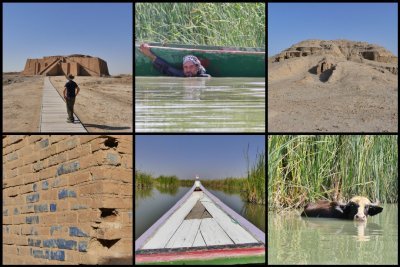
I visited this mixed WHS in September 2024 covering Ur, Uruk (Warka) and the Ahwar Marshes. Like most of Iraq's archaeological sites, the wealth of artefacts found is much more than what is left to see in situ. However, this is perhaps the best group of archaeological sites in terms of authenticity and what's left to see. This applies much more to Uruk than to Ur, although the iconic reconstructed Ziggurat of Ur is a worthy sight.
In Uruk, you literally feel you are trespassing in an archaeological dig, stepping on countless fragments of pottery, cuneiform mud bricks, glazed tiles and conical mosaics. The best time to visit is just before sunset, not only because it is burning hot here earlier, but mostly because all the building remains with glazed tiles and statues (mostly taken to the British Museum and to the Pergamon Museum in Berlin) light up in the afternoon sun. Among the best examples to be explored with a high-clearance car and a generous tip to the caretaker are the Inanna Temple, the Temple of Gareus, and the remains of a ziggurat. Uruk played a leading role in the early urbanization of Sumer in the mid-4th millennium BC, is nicknamed as the birthplace of writing, and possibly gave its name to modern Iraq. It is located east of the current bed of the Euphrates River, on an ancient, now-dried channel of the river. A whole room of artefacts (not to be missed!) has been dedicated to some …
Keep reading 0 comments
Visiting Lorsch today, you might find it to be a rather quiet and uneventful town. However, it's fascinating to imagine that during Carolingian and medieval times, Lorsch was a bustling monastery. One of the unique aspects of Lorsch was that it was among the first abbeys North of the Alps to possess a relic. Before this, strict rules mandated that all relics be kept in Rome. Frankish Count Cancor and his cousin, Abbot Chrodegang, managed to relax these rules, allowing Lorsch to house a relic.
I think the "gifting" of the relic has to be seen in light of the ascendency of the Franks. The Catholic Church's became increasingly reliant on Charlemagne and the Franks for protection. Having a relic would foster this relationship and also strengthen the ongoing Christianisation efforts of the Franks. Alternatively, as our guide suggested, it could have been due to pure corruption and theft. Regardless, Lorsch became very popular, thanks to the relic of Saint Nazarius being located there, offering pilgrims a chance of absolution.
Over the centuries, the monastery continued to grow, acquiring more lands. By the 13th century, it was taken over by the Archbishop of Mainz and gradually lost its national significance. The ultimate decline came with the Reformation, during which the abbey was abandoned, and its treasures were moved to Heidelberg.
Today, what remains are mostly ruins and a few buildings. The highlight is the Torhaus, which you need to join a tour to enter. However, it's rather plain inside, and …
Keep reading 0 comments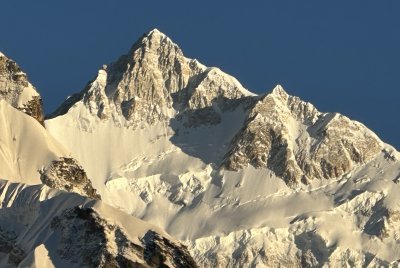
During the late summer and and through the Fall of 2023 I embarked on a series of treks through the Himalayas starting in Ladakh and working my way to Bhutan. During this time I was able to hike in a number of WHS: Great Himalayan National Park, Nadi Devi/Valley of the Flowers, and Sagarmatha. But my favorite trek was to the base of Kangchenjunga, the world's third tallest mountain and the focal point of Khangchendzonga National Park and World Heritage Site. The main viewpoint of the mountain is Gochela Pass, which is a 7 day round trip trek from Yuksum. The trek is different from what one encounters in Nepal, as you must go through a tour company, you camp - as guest houses and food is not provided along the route, and the best feature - there are significantly less hikers.
Though you can usually find a group tour to join, I contracted a solo trip through a local Yukum Company - Mountain Tours and Travels. I can't speak more highly of this company. Though of course the trip was significantly more expensive being solo, I was provided with a personal guide, a porter, a cook and a horseman - who oversaw the four horses that carried the supplies This was at a very reasonable price. I Spent the day hiking with my excellent guide, while the rest of the crew would always go ahead and set up the camp and prepare the amazing food (well beyond what …
Keep reading 0 comments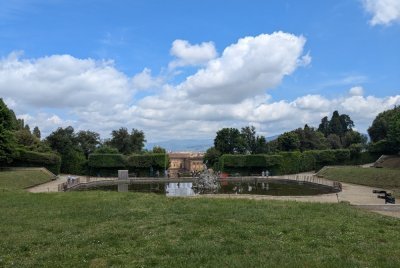
Due to time constraints, we only managed to visit the Boboli Gardens. But it was really worth it. Compared to busy Florence, there were far fewer visitors. The garden is located in a hilly terrain, the garden has a number of ancient statues and several buildings. From the peaks there is a beautiful view of Florence and the surrounding area. Although it is tempting to visit only the part above the Pitti Palace, it is worth going through the whole garden. We spent 3 hours in the garden and we liked it more than overcrowded Florence. At the end, you can go to the cafe in the Pitti Palace, where they had excellent desserts.
Keep reading 0 comments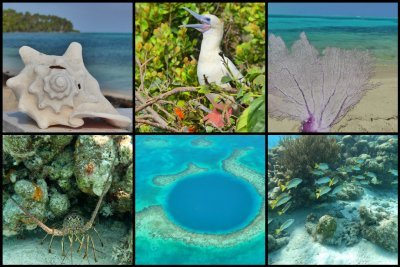
I visited this WHS in Spring 2024 staying close to Half Moon Caye Natural Monument and the Blue Hole Natural Monument. Already getting close to Half Moon Caye, we got lucky and from the boat we saw a couple of dugongs feeding in the middle of the mangroves. If you stop by the mangroves, make sure to wear some mosquito repellent, and beware of crocodiles!
Staying close to Half Moon Caye, meant we were able to come and go at different times of the day with rather short boat trips to enjoy the island and reefs mostly alone. On the island proper, there's a beach which is practically reserved for nesting turtles and a broken down lighthouse where a lot of water birds like to stay. On the opposite side of the island is another lovely beach for swimming, lots of coconut palm trees, a small ranger station with some information boards, and a short hike through the lush vegetation and mangroves, full of hermit crabs, iguanas, lizards and a wooden watchout tower to view the scores of frigatebirds and red-footed boobies and their young in this bird sanctuary. There is a UNESCO WHS plaque for both Half Moon Caye and the Blue Hole Natural Monuments near the Half Moon Caye quay.
We saw lots of different coral, rays, lobsters, conches, moray eels, fish and reef sharks around Half Moon Caye, although snorkelling at the Blue Hole Natural Monument was much better overall with schools of fish, almost …
Keep reading 0 commentsPhilipp Peterer
Condominio theatres of Central Italy
Condominio theatres of Central Italy (Nominated)
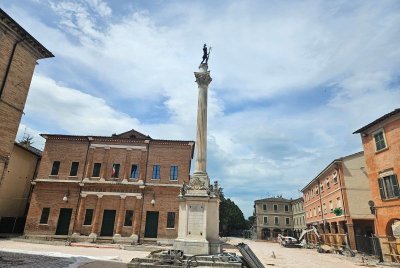
The historical theatres are currently scheduled for 2026, so it’s time for a deeper look. Here’s my “visitor” experience in 2025.
First of all, bad news for Tsunami and probably others who ticked it as visited: the nomination has since been reduced from 62 to 18 and Urbino is no longer among them. Also interesting is, that from the 18 theatres, 4 are actually not in the Marche region. Bagnacavallo and Sant’Agata Feltria are in Emilia-Romagna, Amelia and Spoleto in Umbria. Spoleto is now your best change for an accidental tick, in case you visited the city centre as well, while visiting the Longobards component of Basilica di San Salvatore.
Having family in Italy, I luckily saw two more places. My accidental visits (from the outside) include Bagnacavallo, Pesaro and Spoleto. During my last visit in May 2025 I set myself the goal to visit the interior of at least one of them. I did not succeed. The problem with these theatres is that they are still active theatres and not museums. Your safest option to see one from the inside would be to book a ticket for a play (in Italian, of course). I am not a big fan of plays, so I researched for guided tours.
BagnacavalloThey post the dates for guided tours on viviravenna.it, but only for the same month. There are usually 2 or 3 tours per month, so you need to be really lucky. I never got an answer to my …
Keep reading 0 comments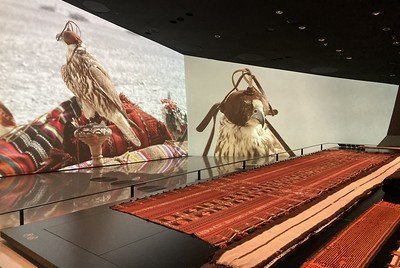
I have a strong fascination for National Museums and every time I visit a “new” country, I try to take one in. What I am interested in is how countries present their history. It’s like a 5-minute pitch they have to give about “Tell me about your country”. This is very difficult to do well: where do you start, and where do you end? What stories do you tell and which ones do you omit? I recently visited the museums in Jordan and Iraq: the Jordan museum really struggles with a lack of authentic content and representativeness, while the one in Baghdad is an excellent Archaeological Museum but doesn’t cover the whole story.
Qatar’s National Museum, put on the Tentative List just this year, however, is an excellent example. I visited it in November 2023. It’s a popular tourist attraction in Doha and the entrance costs 50 rial, about 12.50 EUR.
The nomination focuses on the building. It was designed by the Pritzker Prize-winning French architect Jean Nouvel. Its shape was inspired by the desert rose, a crystal that “grows” in the sand of the desert. It only opened in 2019, so it would be by far the “youngest” WHS. I found it impressive and it is very spacious inside. Its design of interlocking discs also provides ample shade to shelter from the desert heat.
I was even more interested in the collection. Even with limited original objects found on Qatarese soil available, it does …
Keep reading 0 comments
This review is of Bulgaria's Dzhendema Reserve, which I hiked through without initially realizing that I would be in an UNESCO World Heritage Site.
My actual hiking goal was Bulgaria's tallest waterfall, Raysko Praskalo, which is located in Central Balkan National Park. Approximately 1.5 hours after starting the hike, I encountered a sign informing that I was entering an UNESCO World Heritage Site, which puzzled me as I had no idea that I was even in the vicinity of one. The mountain forest provided a very pleasant hike, but I would not have known about is specialness but for the sign. I believed that I hiked for about an hour in the forest before another sign informed me that I was exiting the UNESCO World Heritage Site.
After another 15 minutes of hiking, I arrived at Rai Hut, where lodging and hearty food are available. The mountain waterfall is just beyond the Hut, and I thought the waterfall - which is not part of the UNESCO World Heritage Site - was worth the hike that required moderate to medium exertion. I am not sure if the actual UNESCO World Heritage forest alone would have been worth the hike, but the forest did contribute to the joyfulness of the hike, so I certainly am not going to complain (Well, I could perhaps complain, as I had a nasty trip while I was in this UNESCO World Heritage Site, which resulted in a permanent 8 cm-long scar on my shin).
… Keep reading 0 comments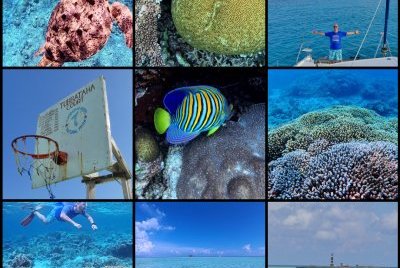
I visited this WHS in Spring 2025 thanks to a special meet-up (9 pax) organised by Thomas Buechler on a liveaboard catamaran for 2 nights. The Tubbataha Reefs Natural Park is made up of Tubbataha Reef (South Atoll and North Atoll) and the smaller Jessie Beazley Reef, located in the middle of the Sulu Sea 150 kilometres southeast of Puerto Princesa. It lies at the apex of what is known as the Coral Triangle, a global centre of marine biodiversity. The natural park is a bird (also a Ramsar site) and marine sanctuary with a very high density of marine species, especially coral, with 72% of all coral genera in the world.
Shortly after departing from Puerto Princesa in the late afternoon in very dark skies and a light drizzle, the very calm seas sheltered by the nearby Palawan land became a bit choppy as we sailed into open seas for approximately 15 hours straight, causing slight seasickness to a few of us. Luckily it wasn't too bad and just before sunset a pod of dolphins lifted our spirits. The seasickness pills kicked in and helped those who took them and after dinner and a couple of beers, chatting on the most remote WHS and each other's missing WHS, we went to sleep in our cabins. As an aside, in the middle of the night our captain and crew decided to moor our catamaran for a while with the returning larger liveaboard ship for divers from Tubbataha for a …
Keep reading 0 comments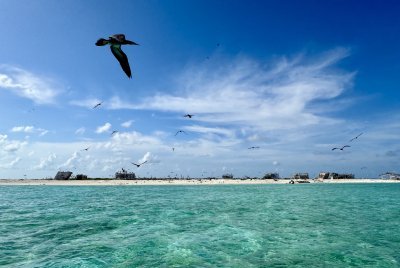
Reasonable scuba divers will agree that, as far as the possibility of marine life encounter is concerned, luck is a constant factor, along with all other environmental conditions, as well the divers’ skill and general behaviour. “It’s not an aquarium down there after all,” is an easy but a necessary caveat. In that regard, I and my fellow divers thank ours lucky stars for the Tubbataha superlatives experience (dive safari in March 2025).
However, to fully appreciate the site, it would be necessary to look back and stocktake decades of efforts from various stakeholders in Palawan - academe, fisherfolk communities, national and local government agencies, NGOs, international organisations, etc., whose efforts made Tubbataha currently a model for marine site conservation.
From the 70s to early 90s, local communities struggled with the declaration of the site as a strict “no-take zone,” and condemned concepts of heritage and conservation as anti-poor and useless. Years later, Tubbataha showed signs of recovery, commercial fish catch in waters outside the park increased, and created a new generation of conservation believers.
Keep reading 0 comments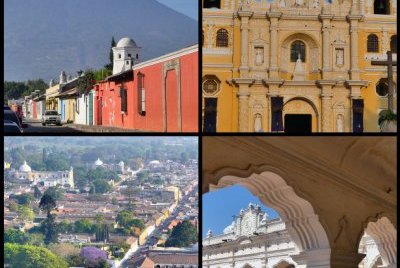
I visited this WHS in Spring 2024 and spent a couple of nights here, mostly to be able to visit early in the morning and around sunset when it isn't so crowded. The nearby active Fuego and Acatenango volcanoes frequently sent up huge plumes of ash in the sky every now and then, just as a reminder of why the earthquake resistant Baroque architecture was necessary here.
Having extra time and entering Antigua Guatemala from three different locations (Lake Atitlan, Tak'Alik Abaj and Santiago de Guatemala) during my stay in Antigua Guatemala, I allowed brief stops to also cover some of the minor locations scattered around the old town, namely Finca Retana and Finca El Portal (some of the oldest fincas in the region for coffee production), San Bartolomé Becerra (a small church but portrayed as a highlight during Holy Week processions), San Juan del Obispo (now an interesting museum) and San Cristobal El Alto (remains of a chapel). It must be said that these minor locations alone don't possess any particular OUV that truly enhances the main old town location or indeed cover it if anyone were to miss out on visiting the old town for any reason. Moreover, the different tWHS within the old town would be much more worthy of an extension than these locations and in my opinion would bring more added value overall.
To cover well the main old town plus all the different tentative WHS present in the old town, including museums, …
Keep reading 0 comments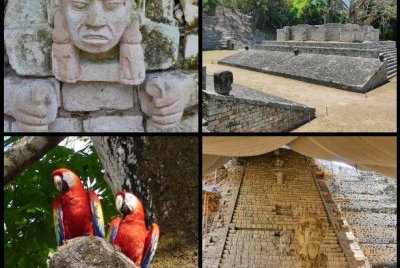
I visited this WHS in Spring 2024 as a 2 night 2 day trip excursion from Guatemala. Arriving late in the afternoon as opposed to an early morning border crossing meant that there was no traffic at all, something that should be taken in mind as we saw long queues to cross the border from Guatemala to Honduras on our return.
This is truly a special WHS and I strongly suggest allowing time before/after your visit for the great site museum to be able to see the original intricate stelae and stone sculptures. Make sure to buy the all-inclusive tickets to be able to visit the museum and the recently dug tunnels too. Like in Quirigua, Guatemala, the stelae or altars covered by thatched roofs or canvas are original while the rest are replicas. The Hieroglyph Stairway is a stunning masterpiece together with the Acropolis, Ball Courts and different plazas. The surrounding vegetation is excellent for fine birdwatching, made especially easy due to several scarlet macaw feeders on some trees. My slightly longer overnight stay in Copan Ruinas was well worth it as there are excellent restaurants and cafes around.
Keep reading 0 comments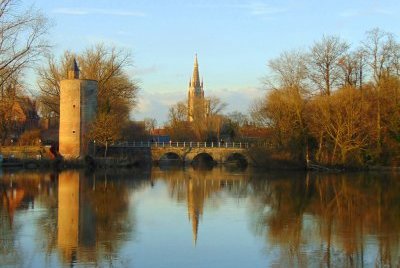
I've been to Brugge three times and I'm yet to be disappointed.I know we are all different but I really struggle to see how people rate Brugge at three stars. It's a 5 star tourist destination. One of the best preserved medieval towns in Europe, the "Venice of the north" with it's extensive canal network (although I dislike that tag) and several UNESCO listed sites besides the Historic Center of Brugge itself.Yes, it does get overrun with tourists (what do you expect?) and it can be expensive but it's still one of the great sights in Europe and definitely the best in Belgium.The centerpiece of the town is the Grote Markt (market square) with the towering 13th century Belfort (belfry of Brugge, also part of a UNESCO listing, Belfries of France and Belgium) looming over it. The square itself is surrounded by beautiful Flemish houses with their stepped facades.But there is more to Brugge than the fairy tale main square. There's another UNESCO site to the south of city center, the Begjinhof (Flemish Béguinages), that sits at the north end of Minnewater Park (picture), a lush open green park surrounded by canals and dotted with medieval fortifications. There's the impressive Sashuis (lock keepers house) where the waters of the canals flow through the arches that support the main building.Other notable sights include the Burg and the Basilica of the Holy Blood. Despite the many sites though, the joy of Brugge is actually just being there, wandering the narrow cobbled streets …
Keep reading 0 comments
I have a soft spot for this Canadian World Heritage Site as I lived in Kingston - the end (or start) of the Rideau Canal - for four years during my university days. Kingston is an attractive city, in my opinion, with a good collection of 19th century limestone buildings. A particularly interesting building is the Neoclassical Kingston Penitentiary, which housed some of the most infamous criminals from 1835 to 2013. The “Kingston Pen” is now a museum with guided tours.
Queen's University campus, a short walk from the historic downtown, also has its share of handsome limestone buildings and pleasant green spaces.
The UNESCO recognized Martello towers, i.e., Murney Tower, Cathcart Tower, Shoal Tower, were uniquely ubiquitous to the Kingston harbour, in that I had never seen them anywhere other than Kingston, but no Kingstonian appeared to take any notice of them.
Fort Henry - also part of the UNESCO World Heritage Site - appeared just a tad out of the way for university students such as myself without a car, but we certainly were aware of its presence across the Great Cataraqui River, looming above the Royal Military College. The first time I visited Fort Henry was through a spooky "Ghosts of Fort Henry" tour, which still runs today. Fort Frederick is located on the grounds of the Royal Military College, but the locals are only vaguely aware of its existence.
These Kingston fortifications were built due to the fear of American invasion, …
Keep reading 0 comments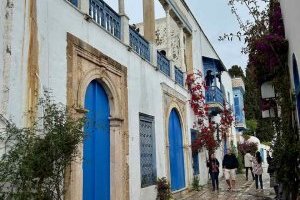
The dossier for Sidi Bou Said speaks glowingly of an important Mediterranean hilltop town, with palaces and big houses and important religious shrines and so on. The reality (at least for our visit) was a typical Mediterranean tourist village, featuring a packed main street with souvenir stalls, Nutella crepe vendors and so on.
We spent an hour or so here and honestly didn’t find much of interest. It was cold and raining steadily during our visit, so it wasn’t the sparkling jewel we had semi-expected. The highlight for us was Dar El Annabi, a restored old mansion built in the traditional style. It was interesting to wander around, a felt like a very fancy version of Dars we had stayed in elsewhere in Tunisia.
Ultimately this is a thumbs down from me. I really don’t see any OUV, and with all the blue and white painted buildings, the vibe is a smaller and less impressive version of Mykonos or Oia on Santorini (the latter is mentioned as a similar example in the dossier). Forcing inscription here feels like adding Mykonos or Santorini, simply because they are Mykonos or Santorini.
Alongside the recent inscription of Djerba, it’s hard not to conclude that “let’s get WH status for our key tourist attractions” is Tunisia's current strategy.
Getting there
It’s extremely easy to access, being one stop further along the train line from Carthage Hannibal station, where most visits to the Carthage site will start. There are buses along the main road …
Keep reading 0 comments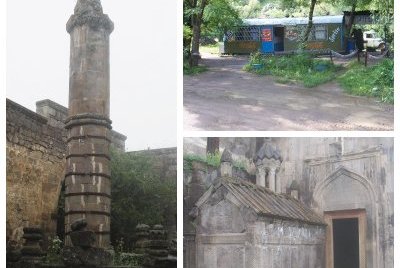
Seeing Tatev pop up as a potential WH candidate for 2028, I had to dive deeply into my memory for an opinion. Fortunately, I still have my diaries in Dutch available.
I visited in 2005, as a day trip from Yerevan with a car + driver. It’s in the direction of Iran and it would take us 5 hours to get there. We regularly encountered large trucks with Iranian number plates. The chance that they are bringing something to Armenia is greater than getting something, but Iran is (compared to Azerbaijan and Turkey) a good neighbour. We also got caught up in very large herds of sheep twice, accompanied by shepherds and dogs.
After an hour or two, we stopped at a roadside restaurant. It was more of a shack, but with two seats outside (photo top right). A small river flows by, and the restaurant also serves fish. And meat, because the owner came outside with half a pig and a cleaver to make slices of meat for the barbecue on a sawn-off tree stump. We only took coffee and enjoyed the surroundings. The driver didn't want me to pay, and the owner of the restaurant didn't want any money from the driver either, hospitality all the way.
Like all real monasteries, Tatev lies in an almost impossible location. First, we had to go down a winding road into the valley for half an hour, and then up again via the continuation of that winding …
Keep reading 0 comments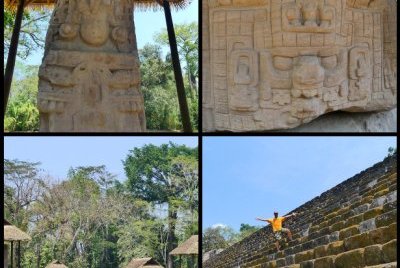
I visited this WHS in Spring 2024 as a detour from Antigua Guatemala before heading to Copan, Honduras. It is rightly famous for its superbly carved and preserved sandstone stelae, 9 of which are protected only by thatched roofs. There are small information boards in front of each stele with hieroglyphic texts and sculpted calendars. The huge trees full of birds surrounding the current site of Quirigua are a mere reminder of the jungle which used to cover these stelae. Old photos of the site can be seen in the small on-site museum, together with photos of the recent flooding. The wooden UNESCO WHS plaque has been changed with another carved one recently.
Stelae A and C are nicknamed as the Creation Stones as they describe the Mayan Creation Myth in about 4 metres of sandstone. Stela K features Quiriguá's last ruler dressed in full regalia, while Stele D depicts Cauac Sky with his unusual beard, who was the most prolific and powerful ruler in Quirigua's history. Stela E is the largest monolithic monument ever erected in the New World and is 10.6 metres tall, with 3 metres of it sunk beneath the ground to hold it upright. Stela I is incredibly ornate and remarkably different from the other stelae in almost every respect. It is of little surprise that it was created by one of the last rulers, Jade Sky. Stela H is most unusual with diagonal date glyphs in groups of four. Another highlight is the Zoomorph …
Keep reading 0 comments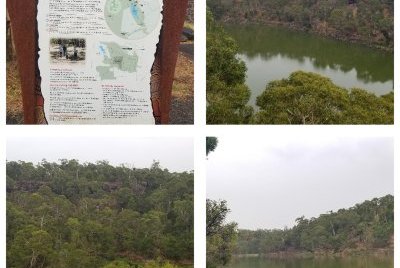
I did the "lazy" thing and just parked at Lake Surprise, part of Mt Eccles National Park, which is easy as long as you have your own car. It was way back in 2018 so maybe things have changed now - for one it's actually inscribed as a UNESCO property now and the path around the lake is actually clear. Back in the days I met with the caretaker (more of a hippie that was doing this on the side) and he was a bit concerned that logs had fallen onto the path - and he made sure I would drive safely to avoid hitting 'roos - mkay. The path around the lake is usually quite easy and doesn't take too long. You can see plenty of birds this way too. From this area you can hike more inwards for the lava tunnel and "natural" bridge. Overall you are ok with half a day here and that's what I did on a drive-by. Naturally, I missed two other areas (which perhaps weren't cleared marked back in the days) but I wouldn't go back for it. I don't think this is a huge phenomenon to visit. I think what was nicer is that the entire area was empty and one is alone for a bit.
Keep reading 0 commentsEls Slots
Garni and the ‘Basalt Organ’ Columnar Joint
Garni and the ‘Basalt Organ’ Columnar Joint (On tentative list)
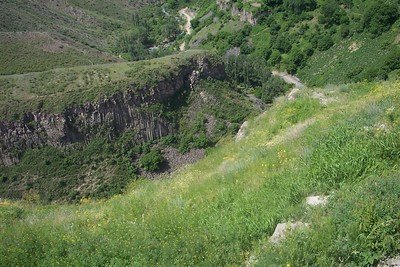
I visited this recent addition to Armenia's Tentative List in March 2005. It's actually surprising that it took them so long to put it forward, since Garni is one of the country's best-known sights. I went on a day tour (a combo with Geghard Monastery), organised from the Soviet hotel Erebuni and costing 10 dollars. There was only one (Armenian) fellow passenger.
At the first stop, we know for sure that Yerevan is behind us: the air here is clean and fresh, the surroundings green. We stopped at a monument for a poet. His favourite spot for inspiration was this view of Mount Ararat. This, snow-covered, is clearly visible today.
An hour's drive follows on quiet roads winding through green hilly landscapes. It is striking how few trees there are here: it is almost all grass and stone. Other road users are often beautiful old Russian models of buses and trucks. Villages consist of wooden houses, fruit trees and some scrap heaps. Here and there, a herd of sheep or cows stands along the road.
Garni is the first main destination for today. Here, we even encounter a limited form of tourism. A bus with Germans is already there, plus an old bus with Armenian children on a school trip. In the parking lot, there are also women selling fruit that has been preserved in glass jars and round loaves of bread. However, we immediately walk onto the grounds. The very beautiful Hellenistic temple looks like a …
Keep reading 0 commentsZoe
Wooden Hypostyle Mosques of Medieval Anatolia
Wooden Hypostyle Mosques of Medieval Anatolia (Inscribed)
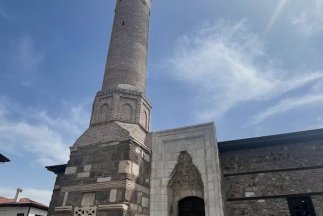
I recently visited Aslanhane Mosque (in Turkish, Arslanhane Camisi) in Ankara as I was already in the city for the day due to a flight connection. This Seljuk mosque, built in 1290 CE, seems to be a lot smaller and less interesting than the other locations of this WHS. Thus, I wouldn't recommend it as a stop to anyone besides WHS travelers. I have seen a lot of Seljuk mosques/madrasahs, of comparable age, that are more stunning and visually intriguing during my time in Turkey (the Çifte Minareli Madrasah in Erzurum, built 1265 CE, if you want a rec)! However, what makes these hypostyle mosques interesting are the wooden beams inside, thought to have originated from the Mongol invasions half a century prior, according to UNESCO. When you arrive, there is a small plaque explaining the mosque's significance in Turkish only. In summary, Aslanhane mosque is near the historical area of Ankara, and if you are already visiting those sites, it is worth a short detour. However, I don't think I would recommend it for anyone farther away.
Keep reading 0 comments